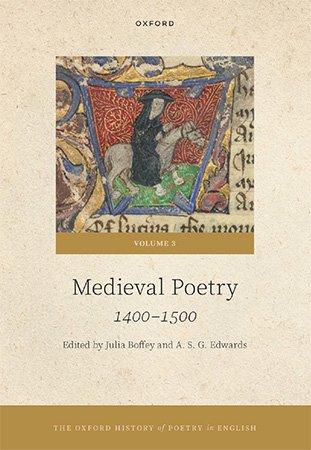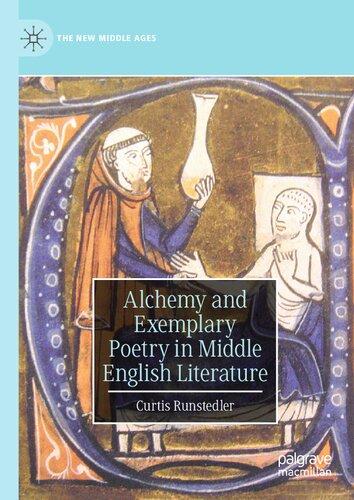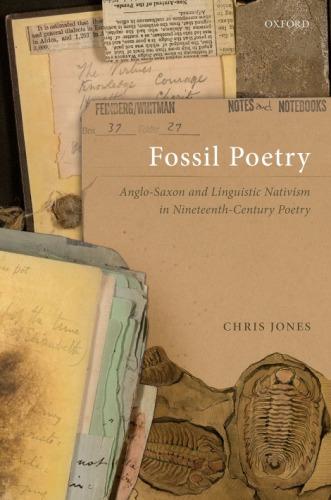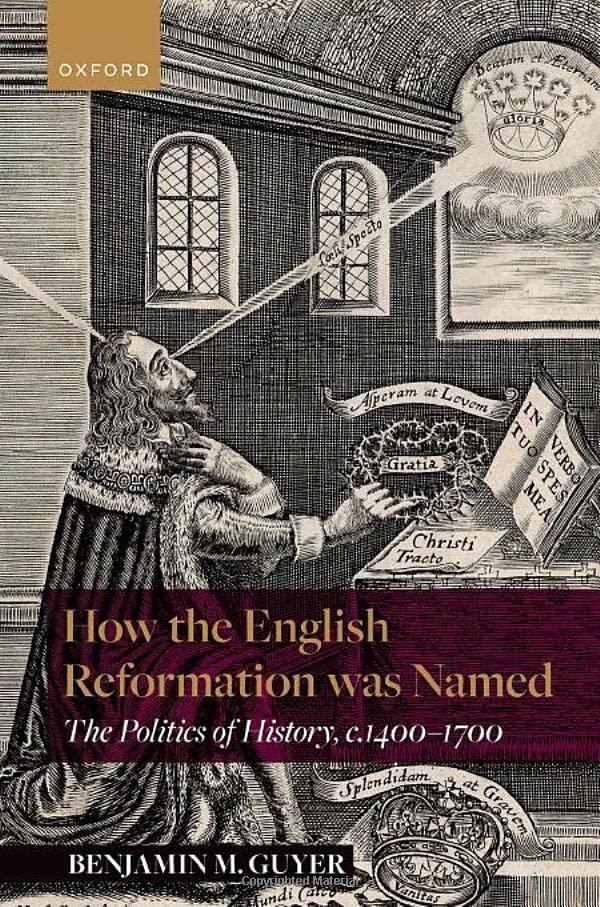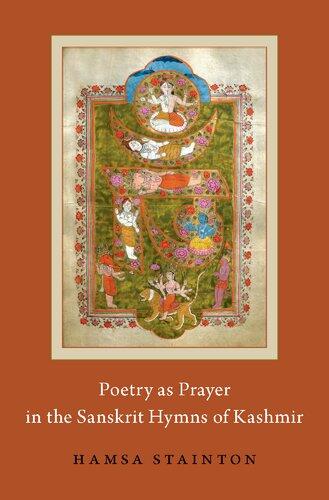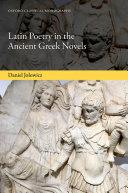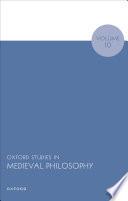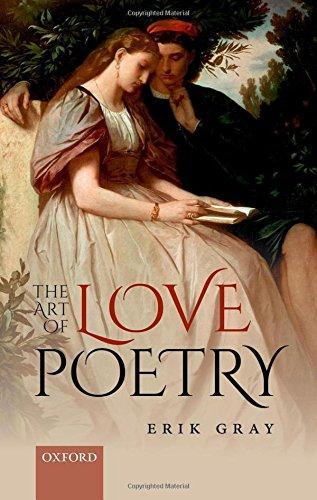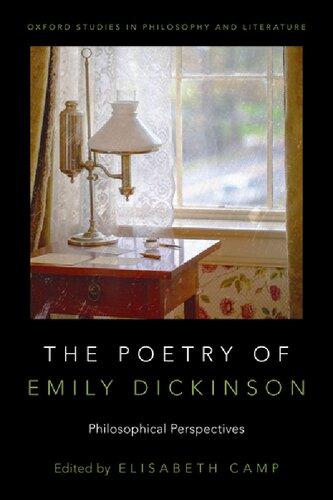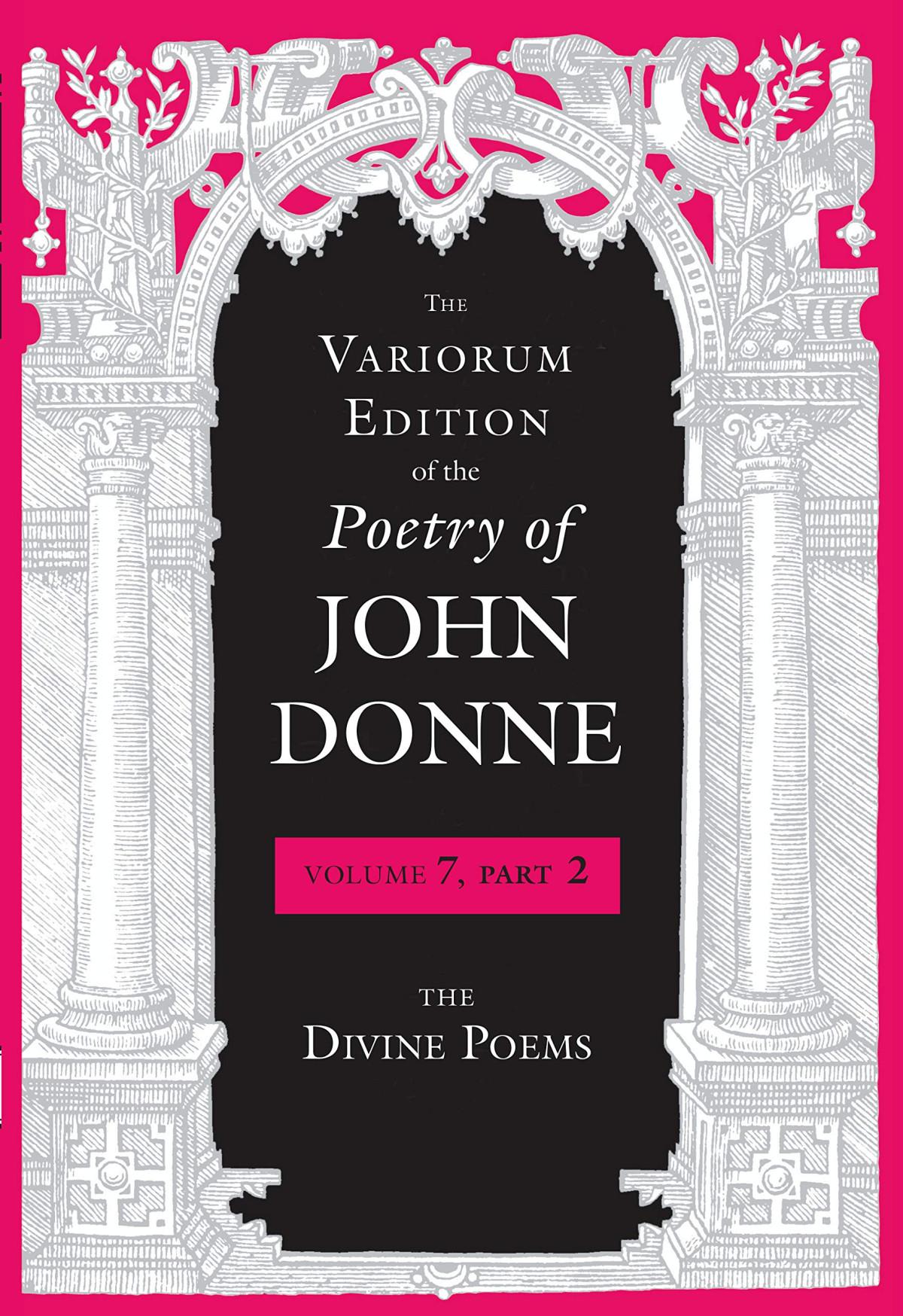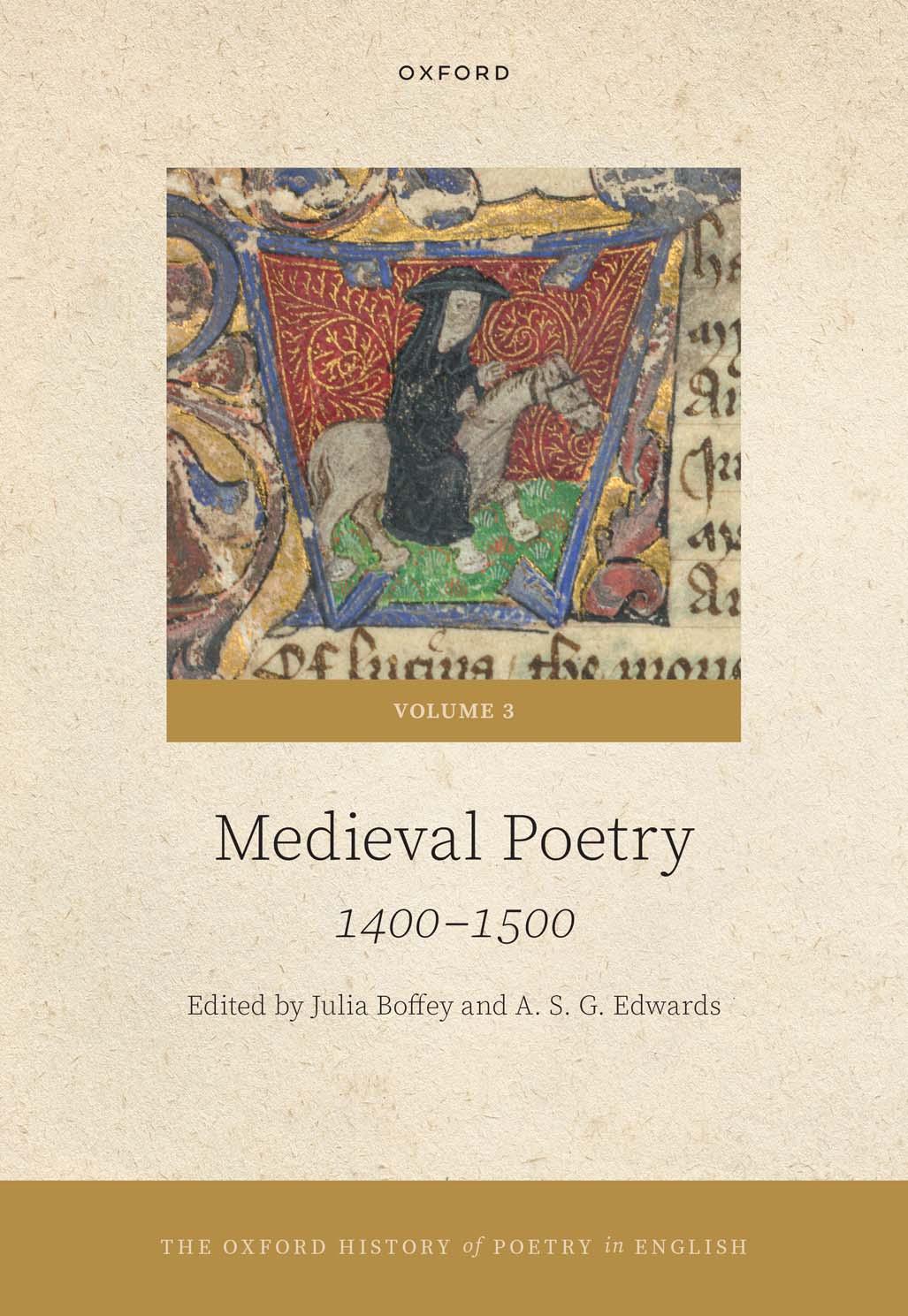The Oxford History of Poetry in English, Volume 3: Medieval Poetry, 1400-1500 Julia
Boffey
Visit to download the full and correct content document: https://ebookmass.com/product/the-oxford-history-of-poetry-in-english-volume-3-medi eval-poetry-1400-1500-julia-boffey/
More products digital (pdf, epub, mobi) instant download maybe you interests ...
Alchemy and Exemplary Poetry in Middle English Literature 1st Edition Curtis Runstedler
https://ebookmass.com/product/alchemy-and-exemplary-poetry-inmiddle-english-literature-1st-edition-curtis-runstedler/
Fossil Poetry: Anglo-Saxon and Linguistic Nativism in Nineteenth-Century Poetry Chris Jones
https://ebookmass.com/product/fossil-poetry-anglo-saxon-andlinguistic-nativism-in-nineteenth-century-poetry-chris-jones/
How the English Reformation was Named: The Politics of History, 1400-1700 Benjamin M. Guyer
https://ebookmass.com/product/how-the-english-reformation-wasnamed-the-politics-of-history-1400-1700-benjamin-m-guyer/
Poetry as Prayer in the Sanskrit Hymns of Kashmir Hamsa
Stainton
https://ebookmass.com/product/poetry-as-prayer-in-the-sanskrithymns-of-kashmir-hamsa-stainton/
Latin Poetry in the Ancient Greek Novels Daniel Jolowicz
https://ebookmass.com/product/latin-poetry-in-the-ancient-greeknovels-daniel-jolowicz/
Oxford Studies in Medieval Philosophy Volume 10 Robert Pasnau
https://ebookmass.com/product/oxford-studies-in-medievalphilosophy-volume-10-robert-pasnau/
The Art of Love Poetry 1st Edition Erik Gray
https://ebookmass.com/product/the-art-of-love-poetry-1st-editionerik-gray/
The Poetry of Emily Dickinson: Philosophical Perspectives Elisabeth Camp
https://ebookmass.com/product/the-poetry-of-emily-dickinsonphilosophical-perspectives-elisabeth-camp/
The Variorum Edition of the Poetry of John Donne. Volume 7, Part 2: The Divine Poems John Donne
https://ebookmass.com/product/the-variorum-edition-of-the-poetryof-john-donne-volume-7-part-2-the-divine-poems-john-donne/
GeneralEditor PATRICKCHENEY
CoordinatingEditors
ROBERTR.EDWARDS
LAURAL.KNOPPERS
STEPHENREGAN
VINAYDHARWADKER
DedicatedtotheBelovedMemoryof MichaelO’Neill
1953–2018
ProfessorofEnglish,UniversityofDurham,UnitedKingdom
FoundingCoordinatingEditor,OHOPE, GreatRomanticsScholarandDistinguishedBritishPoet
THEOXFORDHISTORYOFPOETRYINENGLISH
TheOxfordHistoryofPoetryinEnglish (OHOPE)isdesignedtoofferafresh,multi-voiced, andcomprehensiveanalysisof‘poetry’:fromAnglo-Saxonculturethroughcontemporary British,Irish,American,andGlobalculture,includingEnglish,Scottish,andWelshpoetry, Anglo-Americancolonialandpost-colonialpoetry,andpoetryinCanada,Australia,New Zealand,theCaribbean,India,Africa,Asia,andotherinternationallocales. OHOPE both synthesisesexistingscholarshipandpresentscutting-edgeresearch,employingaglobalteam ofexpertcontributorsforeachofthefourteenvolumes.
1. MedievalPoetry:c.670–1100
2. MedievalPoetry:1100–1400
3. MedievalPoetry:1400–1500
4. Sixteenth-CenturyBritishPoetry
5. Seventeenth-CenturyBritishPoetry
6. Eighteenth-CenturyBritishPoetry
7. RomanticPoetry
8. VictorianPoetry
9. ModernBritishandIrishPoetry:TwentiethCenturytoToday
10. AmericanPoetry:FirstEncountersto1865
11. AmericanPoetry:1865–1939
12. AmericanPoetry:1939–present
13. PoetryinCanada,Australia,NewZealand,andOceania
14. PoetryinAsia,Africa,andtheCaribbean
GeneralEditor’sPreface
TheOxfordHistoryofPoetryinEnglish (OHOPE)aimstoofferafresh,multi-voiced,and comprehensivesurveyofitsvastandcomplicatedtopic:fromAnglo-Saxonpoetrythrough contemporaryBritish,Irish,American,andGlobalpoetry,includingEnglish,Scottish,and Welshpoetry,Anglo-Americancolonialandpost-colonialpoetry,andpoetryinCanada, Australia,NewZealand,theCaribbean,India,Africa,Asia,andotherlocales.
By‘poetryinEnglish’,wemean,quitesimply,poetrywrittenintheEnglishlanguage:Old English,MiddleEnglish,EarlyModernEnglish,ModernEnglish.‘English’poetrycertainly emergesinAnglo-SaxonEngland,aroundthesixthcentury CE;but,as‘poetryinEnglish’ develops,itextendsbeyondthegeographicalboundariesofEngland.Today,poetryin Englishisplanetary.While OHOPE necessarilylimitsthecoverageifnotthescopesimply tocomeintoexistence,hopefullytheSerieswilljoinotherinternationalprojectsinthe world-serviceof‘poetry’.
Whatdowemeanby‘poetry’?Whilewebelievethatmostreaderswillknowwhat wemean,thetopicisintricate,somuchsothataquickdefinitionproveselusive.For example,the OxfordEnglishDictionary (OED)offerssixmajordefinitions,withseven sub-definitions,bringingthetotaltothirteen.Thedefinitionsrangefrom‘Imaginativeor creativeliteratureingeneral;fable,fiction’,to‘Theartorworkofapoet’,andcaninclude even‘Atreatiseontheartofpoetry’,or,‘figurative.Somethingcomparabletopoetryin itsbeautyoremotionalimpact;apoeticqualityofbeautyandintensityofemotion;the poeticquality of something.’Theearliestattesteduseoftheword‘poetry’tracestothe 1380s,incontextsthatemphasizethecontestedtruthclaimsoffigurativerepresentation. InChaucer’s HouseofFame,oneoftherivalrousauthoritiesontheTroystory‘seydethat Omermadelyes,/Feynyngeinhyspoetries’(1477–8).Theendingof TroilusandCriseyde includesavaledictionfor‘theformeofoldeclerkisspeche/Inpoetrie’(5.1854–5).John Trevisa’stranslationofRanulfHigden’s Polychronicon (finishedin1387)connectsidolatry andpoetry:‘Ofþebryngyngeforþofmawmetriecomwelnyhalþefeyningeofpoetrie’ (2.279).Inthe1390s,bycontrast,Chaucer’sClerkseespoetryasanauthoritative,illustrioustraditionembodiedin‘FraunceysPetrak,thelauriatpoete,/…whosrethorikesweete/ EnlumynedalYtailleofpoetrie’(CanterburyTales IV.31–3).Intriguingly,noneofthe OED definitionsspeakofmetre,letalonerhyme,andthereisnosuggestionthatpoetryincludes different‘kinds’(orformsorgenres).Therecentandauthoritative PrincetonEncyclopediaofPoetryandPoetics (2012),perhapswisely,doesnotincludeanentryon‘poetry’ itself.Becausepoetryremainssuchanelusiveconcept—andcanincludelanguageindistinctmetres(suchasiambicpentameter)andrhymes(suchasthe‘Shakespearean’sonnet, rhyming ababcdcdefefgg,orthreequatrainsandacouplet)—wemightremaincontent simplytoopentheconceptup,andletthevolumesintheSeriesspeakontheirown.
Yet OHOPE doesproceedthroughageneralrubric.Wehaveencouragedourcontributorstoaddresstheirprojectthroughthefollowingformula: poetryaspoetry—ratherthan say,poetry ascontext or incontext.Thegoalistohighlighttheartofpoetryitself,asit unfoldshistoricallyintime,acrossidioms,forms,nations,andsoforth.Yetwedonotthink
suchagoalatoddswithcontext,norshoulditbe.Eachvolumeisthusfreetosituatepoetry historically,ideologically,astheeditorsseefit.
Preciselybecause‘PoetryinEnglish’spanssomefifteencenturies,developsinfour majorhistorical‘languages’(Old,Middle,EarlyModern,Modern),spreadacrossmultiplenations(ever-changing),andincludescountlesspoets,bothmenandwomen,the fourteen-volume OxfordHistoryofPoetryinEnglish cannotsucceedinmappingthefull terrain.Thathasneverbeenthegoal.InkeepingwiththePress’sOxfordSeriestemplate, thevolumesremainnecessarilyselective:nosatisfactorilycomprehensive‘coverage’ispossible,orperhapsdesirable.Eachvolumedoesthebestitcantoremainrepresentative,and fair.
Webelievethat OHOPE fillsagapintheavailablescholarshipandcriticism.Atpresent, thereisnoauthoritativehistoryofpoetryinEnglishcoveringBritish,Irish,American,and Globalpoetryfromthemedievalthroughthemoderneras.Readersmightliketoknow thattheoriginstothepresenthistoryevidentlybeganwithAlexanderPope.Intheeighteenthcentury,Pope conceived ofahistoryof‘British’poetry,butittookThomasWarton tobeginwritingone,whichheleftunfinishedathisdeath,stillatworkontheEnglish Renaissance.Accordingly,thefirsttocompleteacomprehensive HistoryofBritishPoetry wasW.J.Courthope,whopublishedasix-volume,single-authoredworkbetween1895 and1905.Otherhistoriesfollowed:in1947,HerbertGriersonandJ.C.Smithcoauthored aone-volumeCriticalHistoryofEnglishPoetry (Oxford);in1961,JamesReevespublished AShortHistoryofEnglishPoetryfrom1340–1940 (NewYork);in1962,KennethHopkins published EnglishPoetry:AShortHistory (London);andin1981,G.S.Fraserproduced AShortHistoryofEnglishPoetry (SheptonMallet).Between1977and1981,Routledge begana HistoryofEnglishPoetry,butevidentlytheserieswasnevercompleted;onlythree volumesareinprint: OldEnglishandMiddleEnglishPoetry,editedbyDerekA.Pearsall; RestorationandEighteenthCenturyPoetry1660–1780,editedbyEricRothstein;andPoetry oftheRomanticPeriod,editedbyJ.R.deJ.Jackson.In1994,CarlWoodring,workingwith JamesShapiroasAssociateEditor,publishedTheColumbiaHistoryofBritishPoetry,aonevolumeeditedcollectionbeginningwithOldEnglishPoetryandendingin1990.In2010, themostrecentattemptatsuchahistoryappeared,editedbythelateMichaelO’Neill, The CambridgeHistoryofEnglishPoetry,anothersingle-volumecollection,coveringEngland, Scotland,Ireland,andWales,withallchaptersdevotedtoasingleauthororasmallgroup ofauthors.
AsforhistoriesofAmericanpoetry,in1993JayParinipublishedanedited Columbia HistoryofAmericanPoetry,makingColumbiathefirstpresstoprintahistoryofpoetry combining‘British’and‘American’—anticipatingthepresent OxfordHistory,yetona much-reducedscale,minusGlobalpoetry,andnowthirtyyearsfromitspublicationdate. EarlierhistoriesinAmericanpoetryincludeHoraceGregoryandMaryaZaturenska’s1946 HistoryofAmericanPoetry1900–1940 (HarcourtBrace)andDonaldBarlowStauffer’s 1974 ShortHistoryofAmericanPoetry (Dutton).NohistoriesofGlobalpoetryinEnglish exist.Consequently,thefieldremainswideopenforacomprehensivehistorythatincludes Global,American,andBritishandIrishpoetry,medievaltomodern.
Thetargetaudiencefor OHOPE issimilarlycomplex,toincludethegeneralreader ofpoetry,studentsatseverallevels(upper-divisionsecondaryschool,undergraduate, graduate),teachersatalllevels,literarycritics,andtextualscholars—effectively,anyone interestedinpoetryinEnglish.Eachchapteraimstomeettheprimarycriterionrequired forthisreadership:acombinationofbothageneralorientationtoitstopicandafresh
approachandcontributiontothefield.Acomprehensivebibliographywillbeprintedat thebackofeachvolume.
Moreover,eachvolumeaimstofeatureastablesetofchapters.Notsimplywillthere bechaptersonmajorpoets(‘Milton’),buteachvolumeaimstoincludechaptersonthe followingtopics,gearedtotheparticulareraorcenturyitcovers:
• Thenatureofauthorshipandliterarycareer,aswellastheroleofthepoetinsociety.
• Imitationandintertextuality.
• Prosody,poetics,andthenatureofliterarytheory.
• Figurationandallusiveness.
• Modesofrepresentation(e.g.,allegory,ekphrasis,andblazonduringtheRenaissance).
• Genre,mode,andform.
• Translation.
• Thematerialproductionandcirculationofpoetry(manuscript,performance,print), includingtheroleofpatronage.
OHOPE payssignificantattentiontosuchmajorculturalvectorsasreligion/theology,politics/nationalism,race/class,andgender/sexuality.However,thegoalwillbeunusualin today’scriticalclimate:toconnectsuchvectorstothe matterofpoetry itself;todiscuss ‘history’andthe‘material’insofarasitallowsforthehistoricisationofpoetry asanart. Aboveall, TheOxfordHistoryofPoetryinEnglish aimstoprovideanauthoritative,useful helpmeetforenjoyingandembracingoneoftheseminalachievementsofworld-art.
PatrickCheney
CHAPTER 1 Introduction
JuliaBoffey&A.S.G.Edwards
MostofthepoetsthatimmediatelysucceededChaucerseemratherrelapsing intobarbarismthanavailingthemselvesofthosestrikingornamentswhichhis judgementandimaginationhavedisclosed.Theyseemtohavebeeninsensible tohisvigourofversification,andtohisflightsoffancy.Itwasnotindeedlikely thatapoetshouldsoonariseequaltoChaucer…Hissuccessors,however, approachhiminnodegreeofproportion.¹
ThomasWarton’sjudgement,inhis HistoryofEnglishPoetry (1775),establishedacritical stancetowardsthepoetryofthefifteenthcenturythatwastoholdswayforthenexttwo centuries.Itwasonethatsawthepoetryofthisperiodasembodyingasignificantdecline fromthestandardsofpoeticexcellenceestablishedbyChaucer.Itwasnotuntilthelatter halfofthetwentiethcenturythatitwaspossibletoseethebeginningsofanewappreciation ofthequalitiesofthepoetryofthefifteenthcentury,anappreciationthatoverthepast fiftyyearshasgrowntoaspateofradicalreassessmentsofitsintrinsicmeritsandhistorical importance.Thisvolumeseekstoconsolidatethisnewsenseoftheachievementsofthe age.
Itisappropriatetobegin,likeWarton,withChaucer.Inthelastbookofthe Confessio Amantis,writtentowardstheendofthefourteenthcentury,Gowerclaimedthat‘thelond fulfildisoveral’withChaucer’ssongs.² WithapropersenseofperiodizationChaucerdied inOctober1400.HisdeaththerebyservedtocreateacleardivisionintheliteraryhistoryofEnglishpoetry.Fifteenth-centurypoetrywastobecruciallyshapedbytherangeof itsattemptstomirrorandmodifyChaucer’sachievements.Littlemorethanadecadeafter Chaucer’sdeathThomasHoccleve,whomaywellhaveknownhim,assessedhispoeticsignificance.Hewas‘thefirstefyndere(inventor)ofourfairlangage’,‘thehonourofEnglissh tonge’,‘flourofeloquence/Mirouroffructuousentendement(edifyingmeaning)’.Hewas both‘maistir’(master)and‘fadir’(father).³ Hoccleve’sacclaimsettheparametersforwhat wastobethehistoricalandexemplarysenseofChaucer’simportanceoverthecourseof thefifteenthcenturyandbeyond.⁴Butitstermsofreference,withChaucerasthesourceof whatcametobethoughtofasaspecificallyEnglishpoetictradition,accommodatesonly partofthefullrangeoffifteenth-centurypoeticproduction.WhileChaucer’sinfluencewas
¹ ThomasWarton, HistoryofEnglishPoetry,revisedbyRichardPrice,3vols.(London,1824),2.269.
² ConfessioAmantis,8.2943–7,in G.C.Macaulay(ed.), TheEnglishWorksofJohnGower,2vols.,EETS,e.s. 81,82(London,1900–1901),2.466.
³ ThomasHoccleve,‘TheRegimentofPrinces’,inF.J.Furnivall(ed.), Hoccleve’sWorks: III. TheRegimentof Princes,EETS,e.s.72(London,1897),1958–67.
⁴ See CarolineSpurgeon, FiveHundredYearsofChaucerCriticismandAllusion,1375–1900,3vols. (Cambridge,1925),1.14–65foradetailedrecordofsuchreferencestoChaucer.TheliteratureonChaucer’s influenceonfifteenth-centurypoetryisextensive. SethLerer, ChaucerandHisReaders:ImaginingtheAuthorin Late-MedievalEngland (Princeton,NJ,1993)remainsthemostsuggestiveaccount;seealso DerekPearsall,‘The EnglishChaucerians’,inD.S.Brewer(ed.), ChaucerandChaucerians (London,1966),201–39.
JuliaBoffey&A.S.G.Edwards, Introduction.In: TheOxfordHistoryofPoetryinEnglish.EditedbyJuliaBoffey&A.S.G.Edwards, OxfordUniversityPress.©JuliaBoffey&A.S.G.Edwards(2023).DOI:10.1093/oso/9780198839682.003.0001
widelyandpowerfullyfelt,itsreverberationsgenerateddiverseeffects,variouslyinflected byfactorsoftime,occasion,andplace,acrossthelandscapeoffifteenth-centuryverse writing.Otherearlierpoetictraditions,somewithlineagesstretchingwellbackbeyond Chaucer’slifetime,continuedtogenerateresponsethroughthecourseofthecentury.
IfthedateofChaucer’sdeathmightseemtoconstituteareassuringlyfirmpointof literary-historicalreference,therewerefewindicationsofsuchstabilityintherealworldof fifteenth-centuryEngland,asDavidRundledemonstrates(Chapter 2).‘England’,‘English’, and‘Englishness’werecomplicatedtermsintheislandsofBritain.⁵ InScotland,aseparatecountrywithitsownking,both‘Inglis’(earlyScots,adistinctformofEnglish)and Gaelicwereinuse.Wales,underEnglishrulesincethelatethirteenthcentury,haditsown flourishingtraditionsofwritinginWelsh;andtheprincipality’schargedrelationswiththe Englishcrownwerebrieflyinvigoratedintheopeningdecadesofthefifteenthcentury underitsprinceOwainGlyndŵr,wholedanultimatelyunsuccessfulrebellionbeforehis death c1415.InIreland,largelyGaelic-speaking,Englishflourishedonlyintheareaofthe ‘Pale’,immediatelyaroundDublin.ThesepartsofBritainremainedinuneasyrelationship withEnglandthroughthecentury.Andtheirowndistinctliterarycultures,especiallythat ofScotland,showlimitedresponsetotheexpandingliteraryactivityinEngland.
ForthoseconsideringthemselvesEnglish,thecenturybeganwithausurpationand ensuingeffortstoconsolidatethenewLancastriandynastyinauguratedbyHenryIV (1399–1413).Thesetroubledyearswerealsodominatedbyanxietiesaboutreligious orthodoxy,withpopulardisseminationofWycliffiteideaspromptingLollardsupportfor movementssuchastherebellionledbyJohnOldcastlein1414.Thisrebellionandother manifestationsofLollardywereattackedinverseofdifferentkinds,notablybyThomas Hoccleve.
Thedesiretopromotereligiousstabilitywastoadegreeundercutbyvariousformsof politicaldisorderbothoutsideandwithinEngland.Theuncertaintiesarisingfromthis foundexpressioninbothshortpoemsandlongerworks.LancastriansuccessesintheHundredYears’WaragainstFrance—HenryV’svictoryatAgincourtin1415,whichproduced arangeofverseresponses;the1420TreatyofTroyeswhichestablishedanEnglishrightto theFrenchthrone,aneventcelebratedbyLydgateattheendofhisSiegeofThebes—brought nolastingstability.Bythe1430s,withFrenchforcesinvigoratedafterthecollapseofthe siegeofOrleans,andthewithdrawalofBurgundiansupportforHenryVI,theEnglish causewasdramaticallyweakened.TheendoftheHundredYears’War,withFrenchvictory attheBattleofCastillonin1453,sawthelossofallEnglishterritoryinFrance,including thelong-heldterritoryofGascony;onlyCalaisremainedunderEnglishcontrol.Thatsuch significanteventsreceivedonlyintermittentcommentaryinversesuggeststheweightof theirimpact.
PoliticalcataclysmsatsomefurtherdistancefromEnglishinterestsandBritain’sborders alsoprovokedlittleinthewayofsignificantverse.TheseizureofConstantinoplein1453, andthe1480siegeoftheislandofRhodes,forexample—tworemindersofthestrengthof theOttomanempireanditspotentialthreat,notjusttoChristianityitself,buttowestern culture—donotseemtohavebeenmarkedbypoeticresponses.
Thismayhavebeenbecauseoftheweightofinternalpreoccupations.Theshadowof usurpationlayoverthecenturyfromitsbeginning.ItsimplicationsforEnglishpoetry weremarkedbyGowerinarevisionoftheprologueto ConfessioAmantis whichchanged itsdedicateefromRichardIItoHenryIV.ThereignofHenryIVpromptedvariousliterary
⁵ FortheplaceofEngland,Ireland,Scotland,andWalesinthewiderglobalcontext,see ChristopherAllmand (ed.), TheNewCambridgeMedievalHistory,VolumeVII:c.1415–c.1500 (Cambridge,1998).
expressionsoftheneedfororderandstability,detectableamongsomeofthepolitical poemsinBodLMSDigby102.ThedeathofHenryVin1422createdfurtherinstability, withhissuccessor,HenryVI,thelastLancastrianking,onlyaninfant.HenryVI’sreignwas longbutfracturedbyconflictsarisingfromcompetingLancastrianandYorkistclaimsto thecrowninthecourseoftheso-calledWarsoftheRoses.HenrywasdeposedbytheYorkistEdwardIVin1461.Hereclaimedthethronein1470,butathisdeathin1477wasagain replacedbyEdward.Theshiftingallegiancesandtroublesofthesedecadesarereflectedin anonymousshortpoemsandcarolswhosesupportforoneorotherfactionisoccasionally subsumedinamoreheartfeltwishfor‘concorde&unite’.⁶ ThereignofEdwardIVwas followedbytheaccessionofanotherYorkist,RichardIII.Hisdeathin1485attheBattle ofBosworthopenedthewayforHenryVII’sinaugurationofanewTudordynasty,albeit onewhosestatuscontinuedtobemarkedbyperiodicunrestwiththeemergenceofdifferentclaimantstothethrone.SuchconcernwithdisorderinHenry’sreignfindsexpression inoneofSkelton’searliestpoems,anelegyonthedeathofHenryPercy,fourthearlof Northumberland,killedbyrebelsin1489.⁷
Theimplicationsofthesedomesticeventsfortheproductionandtransmissionofpoetry werenecessarilycontingentonpolicyandmoment.Anumberofworkscommissioned orpatronizedincourtcirclesintheearlydecadesofthecenturyevidentlyconstituted responsestothenewLancastrianregime,variouslylaudingandwarningthoseatitsheart. Inthesecircles,andforpoetslikeLydgateandHoccleve,discussedbySebastianLangdell andRobertR.Edwards(Chapters 24 and 25),theethicalaspectsofChaucer’spoetry, togetherwithitsEnglishness,madeitapowerfultouchstone.Somechoicesofbothpoetic matterandformlooktoChaucer’smodels.AmongworksofferingcommentaryoncontemporaryeventsandadvicetoEngland’srulers,Lydgate’s TroyBook (commissionedin1412 bythefutureHenryV)respondstoChaucer’sTroilusandCriseyde(amanuscriptofwhich thekingowned);andHoccleve’s RegimentofPrinces (completedin1411anddedicatedto thefutureking)includesdirectionstorememberthe‘freschlyflynesse’ofChaucer’s‘persone’.⁸ BothoftheseworksemployformsgivenEnglishcurrencybyChaucer,pentameter coupletsandrhymeroyalstanzasrespectively.Onoccasions,theuseofChaucerianmodelswasnotwithoutitsironies.LaterinthecenturyinScotland,atatimeoftenserelations betweenEnglandanditsnorthernneighbour(c1477),BlindHary’snationalisticpoetichistory TheWallace woulduseiambicpentameterandeight-andnine-linestanzasbasedon Chaucerianmodelsforhisownnationalistends,asAndrewGallowayshows(Chapter18).⁹
Notallearlyfifteenth-centurypoeticcommentatorsonLancastrianrulefeltunderthe shadowofChaucer’sinfluencetothesameextent.TheanonymousauthorofTheCrowned King,writingclosetothedateofHenryV’sAgincourtcampaignin1415,couchedhisadvice tothekingintheformofadreamvisioninalliterativemetre.¹⁰ Thechoiceofformand metreplaceshimatadistancefromcourt-affiliatedLancastriancommentators.Doubtless regionalfactorswereanelementindecisionsabouthowtorespondtotheincreasing availabilityofmanuscriptsofChaucer’swritings.
⁶ Seetheselectionofpoemsin R.H.Robbins(ed.), HistoricalPoemsoftheXIVthandXVthCenturies (NewYork,1959),189–227.Thequotationistakenfromtherefrainlineinpoemno.79,‘ReconciliationofHenry VIandtheYorkists(1458)’.
⁷ Macaulay(ed.), TheEnglishWorksofJohnGower,1.1–34.
⁸ A.ErdmannandE.Ekwall(eds), Lydgate’sSiegeofThebes,2vols.,EETS,e.s.108,125(London,1911,1930), and Furnivall(ed.), Hoccleve’sWorks:III,4993–5(180).
⁹ AnneMcKim(ed.), TheWallace:BlindHarry (Edinburgh,2003).
¹⁰ In HelenBarr(ed.), ThePiersPlowmanTradition (London,1993),205–10.
Someoftheversethatemergedinthecourseofthecenturywas,asalreadynoted,directly promptedbypoliticalandmilitaryeventsbothabroadandathome.JohnPage’s Siegeof Rouen offersanunusualfirst-handperspectiveonamilitaryeventof1418–19intheHundredYears’War.The LibelleofEnglyshePolycye,originatingataslightlylaterpointinthe contextofthe‘werreinFraunce’,presentsdistinctivepoliticalandeconomiccommentary oncurrenteventsthroughitsanalysesofEngland’straderelationswithvariouscountries inthe1430s.¹¹ Itscontemporaryappealtoawidesocialspectrumisevidencedbythelarge numberofsurvivingmanuscriptcopies.Butitisrareforsuchpoeticvoicestoachievedistinctiveexpressionabouthistoricalmatters,presentorpast.Mostoften,versedepictionsof politicaleventsandhistoricalcharactersareshaped,withvaryingdegreesofexplicitness, byfaction,individualorregional,andconstitutewhatwewouldnowtermpropaganda.
TherewerewiderliteraryconsequencestotheextendedwarwithFrance.AtthebeginningofthefifteenthcenturyEnglandstillhadatrilingualculture,withFrenchandLatinin fairlywidespreadusealongside,or(insomecontexts)inpreferencetoEnglish.Although thisremainedthecase,thecontinuingwarwithFranceimbuedthissituationwithnew complexities.DomestichostilitytotheFrenchlanguagemayhavebeenafactorinthe growthofAnglophoneliteraryculturefromthelaterfourteenthcentury,onethatfound expressioninadevelopingsenseofadistinctiveliteraryEnglish,asexploredherebyJenny Nuttall(inChapter 5).ButatthesametimetheEnglishpresenceinFrancemusthave exposedsomeEnglishpeopletoFrenchpoeticforms,whilethepresenceinEnglandof nobleFrenchprisonersandtheirhouseholds(newlyvisibleafterAgincourtandthetakingofprisonersforransom)probablygaveFrenchliterarycultureanincreasedpalpable presenceinEngland.ThedebtowedbyChaucerandGowertoFrenchmodelsandforms anywayconstitutedapowerfulprecedent.Thecontinuing‘anglicization’ofFrenchgenres andverseformsinthefifteenthcentury,andthetasteforworksinFrench,wasthusperhapsatonceadmiringandastatementofEnglishculturalassertion.Thisdouble-edged phenomenonfoundexpressionmostobviouslyinformsofwhatmaybebroadlythought ofas‘courtly’poetry,asdiscussedbyRoryG.Critten(Chapter 17).Thebodiesofpoetry inbothFrenchandEnglishassociatedwithCharlesofOrleans,residentinEnglandunder housearrestfornearlythreedecadesafterhiscaptureatAgincourt,aresignificantproducts ofthiscomplexsetofculturalrelationships.¹²
TherewereotherContinentalliteraryinfluencesinthisperiodofalessdefinablekind. ThetranslationintoEnglishverseofLatintextsfromeithertheclassicalpastorfromthe ItalianRenaissance,consideredherebyMarcoNievergelt(Chapter4),wasinfrequentand oftenderivative.DukeHumfreyofGloucester’sassociationswithItalianhumanismare welldocumented,asishisroleinvernacularversetranslationofvariouskindsincluding thisone(onwhichseeA.S.G.Edwards,Chapter 15)andLydgate’s FallofPrinces (on whichseeRobertR.Edwards,Chapter 24).ButLydgate’sworkisnotadirect(‘humanist’)translationofBoccaccio’sLatin,butisbasedonanearlyfifteenth-centuryFrench proseversionofit.NorisitclearwhetheranotheruniqueMiddleEnglishverserendering,ofBoccaccio’s Demulieribusclaris,isadirecttranslationoftheLatin.¹³ FewEnglish
¹¹ JoannaBellis(ed.), JohnPage’s‘TheSiegeofRouen’,MET51(Heidelberg,2015),and GeorgeWarner(ed.), TheLibelleofEnglyshePolycye:APoemontheUseofSea-Power,1436 (Oxford,1926).
¹² Mary-JoArn(ed.), FortunesStabilnes:CharlesofOrleans’EnglishBookofLove (Binghamton,NY,1994); Mary-JoArnandJohnFox(eds), PoetryofCharlesd’OrléansandHisCircle:ACriticalEditionofBnFMS.fr. 25458 (Turnhout,2010).
¹³ JanetCowen(ed.),OnFamousWomen:TheMiddleEnglishTranslationofBoccaccio’s‘DeMulieribusClaris’, MET52(Heidelberg,2015).
poetsactuallyventuredtoItalyinthefifteenthcentury.OsbernBokenhamandJohnCapgrave,membersoftheAugustinianorder,arenotableexceptions,buttheirItaliantravels seemtohavemadelittleimpressionontheirhagiographicwritings.Thedirectinfluence ofLatinhumanismonEnglishpoetryofthefifteenthcenturyseemstohavebeenlimited.Itprobablyachieveditsmostdistinctiveexpressionintheanonymoustranslationof partofClaudian’s DeconsulatuStilichonis,thatsurvivesinasinglemanuscriptdonefor Richard,dukeofYork,composeduniquelyinblankversewiththeLatinoriginalonfacing pages.¹⁴
Theformsofpolitical,economic,andsocialchangewhichinvitedpoeticexperimentationdidsoinpartbyexpandingtherangeofenvironmentshospitabletopoeticproduction.Courtlyenvironments—EnglishandScottish,royalandaristocratic—nonetheless remainedpre-eminentnodesofpoeticproductionandconsumptionthroughoutthecentury.Thepresenceofeducatedandwealthyreaders,thepossibilitiesofpatronageand preferment,andtheavailabilityofskilledscribesandilluminatorstorecordtextsinmaterialformmustallhavecontributedtotheconcentrationofpoeticenergyinthesemilieux. MuchofHoccleve’soccasionalpoetrywasproducedintheambitoftheLancastriancourt, basedinWestminsterandLondon;inthesecondhalfofthecentury,thepoetGeorge AshbywasemployedinthesignetofficeandintheserviceofMargaretofAnjoubefore hiscommitmenttotheFleetprison.¹⁵ Beyondroyalcircles,thepatronageofanumberof aristocraticfamiliescanbeassociatedwithsurvivingpoems.LydgaterespondedtocommissionsformembersoftheBeauchampandStaffordfamilies;Walton’sversetranslation ofBoethius’s ConsolationofPhilosophy wasundertakenforElizabethBerkeley,oneofa familyofmajorliterarypatronsinGloucestershire.Poetryalsoflourishedinthehouseholdsofsomelesserknights,suchasSirMilesStapletonofNorfolk,towhomJohnMetham dedicated AmoryusandCleopes.¹⁶
Thecharacteristicsofcourtpoetryfromthisperiodarevarious.Featuresof‘courtliness’mightincludereferencetoboththegeneraltastesandspecificcommissionsofnoble patrons,andallusionstotheirlineageortheeventsinwhichtheywereinvolved:Richard Holland’s BukeoftheHowlat, producedmid-century,isdedicatedtoElizabeth,wifeof ArchibaldDouglas,earlofMoray.¹⁷ TheearliestsurvivingprintedpoembyacontemporarypoetwasalamentforthedeathofJasperTudor,earlofPembroke,published in1496.¹⁸ Poemsemanatingfromcourtenvironmentsmightalsoincludecircumstantial detailsaboutparticularoccasions.TherangeofWilliamDunbar’slatefifteenth-century outputfortheScottishcourtofJamesIVindicatessomethingoftheoccasionalvarietythat mightberequired,¹⁹ andDunbar’scommandofarangeofformsandvoicesillustratesthe resourcefulnessusefultoacourtpoet,asPamelaM.Kingshows(Chapter 27).Forserious courtoccasions,allusionstoChaucerianprecedentsseemtohavebeenappropriate:rhyme royalandballadestanzas,and(forshorterpieces)variationsofEnglishversionsofFrench fixedforms,retainedalengthycachet.
¹⁴ EwaldFlu¨gel,‘EinemittelenglischeClaudian-Übersetzung(1445)(Brit.Mus.Add.Ms.11814)’, Anglia, 28(1905),255–99,421–38.
¹⁵ MaryBateson(ed.), GeorgeAshby’sPoems,EETS,e.s.76(London,1899).
¹⁶ See DerekPearsall, JohnLydgate (London,1970),166–8; MarkScience(ed.),JohnWalton, Boethius:De ConsolationePhilosophiae,EETS,o.s.170(London,1927); H.Craig(ed.), TheWorksofJohnMetham,EETS,o.s. 132(London,1916).
¹⁷ RalphHanna(ed.),RichardHolland, TheBukeoftheHowlat,STS,5thseries,12(Woodbridge,2014).
¹⁸ STC14477.
¹⁹ PriscillaBawcutt(ed.), ThePoemsofWilliamDunbar,2vols.(Glasgow,1998).
The‘courtly’formsandsubjectmatterofverseproducedinroyalandnoblecircleswere, however,morewidelyinfluential.Inlesserhouseholds,whetherthoseofprovincialmembersofthegentryclass,oroftheurbanelite,orofimportantecclesiasts,suchverseserveda rangeofeducativeandrecreationalpurposes.Householdreadinginthesecontextssometimesalsocomprehendedmoreobviouslyinstructivepoems,anumberofwhichhadawide circulation,andincludedverseinstructionsonconductorpiety,andfictionalnarratives andsaints’livespromotingexemplarybehaviour.Suchcollections,whichincludeboth worksbyidentifiablefourteenthandfifteenthcenturypoetsaswellasmuchanonymous verse,arediscussedbelowbyEdwardsandBoffey(Chapter 8).
Prosperousurbanhouseholdswerealsoincreasinglysignificantsitesofpoeticproductionanduse.Here,asinthemoreruralcontextsjustinvoked,verseservedavarietyof functions,fromtheinstructionofchildrenandapprenticestothedevotionalneedsof mixedsecularcommunities.Lydgate’s BycorneandChichevache,writtenforperformance inaLondonmerchant’shousehold,offerswhatwasevidentlyconsideredacomictakeon householddynamics.²⁰ Civicfraternitiesintownsandcitieswereimportanttopoeticproduction,whetherdirectlyassponsorsofversemarkingspecificoccasions,ormorediffusely inrelationtosocialconnectionsinformingnetworksofpatronage.
Monastichouses,schools,andecclesiasticalestablishmentsinallpartsofBritain remainedimportantculturalcentreshospitabletoverseproduction.Thelonglistofnamed poetsworkinginsuchenvironmentsincludesHenryBradshawandJohnLydgate,membersoftheBenedictineorder;JohnAudelay,OsbernBokenham,JohnCapgrave,John Hardyng,JohnWalton,andAndrewWyntoun,allAugustinians,andJamesRyman,aFranciscanfriar.Incollectionssurvivingfromtheseenvironments,Englishversesometimes keepscompanywithLatinandFrenchmaterial.Schools,colleges,innsofcourt,andgovernmentdepartmentswereothercommunitieshospitabletoliteraryproduction.Some, possiblymuchoftheanonymouspoetrysurvivingfromsuchenvironmentsisperhapsto beassociatedwiththediffuse‘precariat’ofthosewithlooseaffiliationstoreligioushouses orecclesiasticaloracademicestablishments.
Someinstitutionallysponsoredpoetry,originatingincommunitiesofthiskindorwith civicbodies,servedoccasionalpurposesthatincludedsinglenotableeventssuchasthe Londonsheriffs’feastforwhichLydgateprovided TheMummingatBishopswood,orroyal entriestoLondonandothercities,orthecompletionofbuildingsormonuments.²¹ But inotherinstancesversewasneededforoccasionswhichcameroundatregularintervals, aswithannualperformancesofreligiousplays,andthetextsprovidedforthesewould havebeensubjecttochangeandadaptationovertime.Civicauthoritieswerethesponsoringagentsforsomeofthisdrama,especiallyinurbancentressuchasYorkandCoventry, asTamaraAtkindemonstrates(Chapter 14);andreligiouscommunitiesandecclesiasticalhouseholds(likethatofArchbishopMortoninthe1490satLambethPalace,hometo HenryMedwall)wereotherimportantcentresofplayproduction.Thesurvivaloffifteenthcenturymaterialofthiskindwasenhancedbyagrowingwishtorecordandpreserveit inthecontextofcivicrecordsandchronicles.InthecaseofMedwall’splays,survivalwas mademorelikelybythefactoftheirtransmissionintoprint,afactorwhichalsocontributed tothepreservationofhisnameasauthor;²² thisandotherimplicationsoftheappearance
²⁰ HenryNobleMacCracken(ed.), TheMinorPoemsofJohnLydgate:PartI:ReligiousPoems;PartII: Secular Poems,2vols.,EETS,e.s.107and192(London,1911,1934),2.433–8.
²¹ MacCracken(ed.), MinorPoemsofJohnLydgate,2.668–71.
²² STC17778and17779; AlanH.Nelson(ed.), ThePlaysofHenryMedwall (Cambridge,1980).
ofprintcultureinEnglandinthelastquarterofthefifteenthcenturyarediscussedby SiˆanEchard(Chapter 9).
Theauthorsofoccasionalpoetrymaynotalwaysbeidentifiablebyname,buttheycan sometimesbeattachedtoplace,andtohistoricalmoment,fromtheinternalevidenceof whattheywroteorfromthecontextinwhichtheirwritingshavesurvived.Butavery largequantityoffifteenth-centurypoetryisnonethelessbothanonymousandresistantto localization.Theoriginsofmanyofthelyrics,carols,charms,comicpoems,andshort narratives,discussedbyHelenPhillips(Chapter 23),andavarietyofotherkindsofverse looselycategorizableas‘popular’,discussedbyBenParsons(Chapter 22),areimpossible topindowntoparticularplacesorcontextsandsometimeseventodatewithinacentury. Muchofthismaterialenjoyedverywidegeographicaltransmission;someofit,suchas songsandcarolsonthehollyandtheivy,mayhavecomeintobeingwellbeforethefifteenth centuryandwouldremainincirculationwellbeyondit.²³ Suchmaterialsfindbroader expressionandsurvivalinotherforms,asillustratedinJuliaBoffey’sdiscussionof‘Verse OutsideBooks’(Chapter 10).
Unsurprisingly,thetopicsoffifteenth-centurypoetryaremultifarious.Theincreasing tendencytorecordandpreservetextsofallkindsmeansthatawiderangeofmaterial hassurvived,andfromdifferentpartsofBritain.Moreofthe‘popular’verselikelyto haveenjoyedanessentiallyoralcirculationwasrecordedinwrittenforminthefifteenth centurythanhadbeenthecaseinearliercenturies,givingamaterialposteritytosongs andcharmsandcomicnarratives.Utilitarianpoems,consideredherebyA.S.G.Edwards (Chapter15)similarlybegintosurviveingreaternumbersfromthisperiod,whetherinthe formoflengthyversetreatisesontopicslikemasonryandalchemy,orsnappierstanzason healthortheweather.Butattheheartofmuchfifteenth-centurypoetryremaintopicsthat hadinformedtheversewritingofearlierperiods.History,bothancientandmorerecent, madeitswayintothenarrativesandchroniclesexaminedherebyVenetiaBridgesandby AndrewGalloway(Chapters 18 and 19 respectively).TheversifyingofChristianteachingandnarrativeisdiscussedbyTakamiMatsuda(Chapter 11),hagiographybyCynthia TurnerCamp(Chapter12),andthereligiouslyricbyChristianaWhitehead(Chapter 13). Intermsofsecularwriting,thefamiliar‘matters’ofromanceareexploredbyAislingByrne (Chapter 20)andPhillipaHardman(Chapter 21).
Somenewandspecificreligiouspreoccupationsarediscernible,however.Formsof hagiographicalanddevotionalwritingreceivednewimpetus,inpartthroughtheemergenceofindividualsaints’livesbyLydgate,Bokenham,andCapgrave,andalsothrough Lydgate’sextremelypopular LifeofOurLady.Somenewemphasesarealsoapparentin theshorterpoemsdiscussedherebyChristianiaWhitehead(Chapter 13).Therangeof versehere,includingthepoemsofBodLMSDigby102,theanthologyofworksassociated withJohnAudelay,JamesRyman’scollectionofcarols,andothergroupsofshorterlyrics andprayersinanonymouscollections,reflectsanewintensityofengagementwithindividualpiouspractice.Lydgate’sshortreligiouslyricscontrivethisintensityinpartbytheir notablydensetextureofliturgicalallusionandquotation,afeaturealsooftheburdensand refrainsofsomepopularanonymouscarols.
Againstthebackdropofspiritualanxietiesandpoliticalvolatility,someofthecentury’s poetryseemsalsotobepreoccupiedwithreflectionsontheprivateselfinthepublic world.Hoccleve’s Series famouslyencapsulatestheseworries,perceptiblealsoinAshby’s
²³ RichardL.Greene(ed.), TheEarlyEnglishCarols,2ndedn.(Oxford,1977),82–4.
Prisoner’sReflections and(sometimeslessexplicitly)inpoemsofferingadviceonconduct, asdiscussedbyMatthewGiancarlo(Chapter 16).²⁴ RoryG.Critten(Chapter 17)shows howtheprivateself’scapacitytonegotiatehumanrelationshipscomestotheforeinsome ofthecentury’sdreamvisionsandlovelyrics,formsofwritinginwhichtheworldofcourtly sociabilitypresentsopportunitiesforexploringaspectsofbehaviourandcommunity.
Perhapsthemostnotablestrandofthecentury’spoeticconcernsisitsfocusona literarytraditionofwritinginEnglish,anewphenomenonmadepossiblebythelate fourteenth-centuryburgeoningofEnglishpoetryofdifferentkinds.Thiswasnotamonolithictradition,asJamesSimpsonmakesclear(Chapter 3),anditaccommodatedavariety offormsandconventions,butforpoeticwritingitofferednewvistasofcreativepossibility,bothforcompositioninthenativetongueandforreflectionsaboutthemakingand functionsofpoetry.
Chaucerwasinevitablyapervasiveshapingpresenceinpoeticwritingsthroughout thisperiod,bothexplicitlyandimplicitly.Somepoeticpractitionerssilentlyappropriatedphrases,lines,orpassagesfromhisworks,whileothersdrewonChauceriantopoior aspectsofstyle.StillothersturnedtoChaucer’sworkstoprovidemorecomplexformsof inspiration:asRoryG.Critten(Chapter17)andJoannaMartin(Chapter26)demonstrate, workssuchastheanonymous FlowerandtheLeaf andRobertHenryson’s Testamentof Cresseid bothemulateandinterrogateChaucerianmodels.²⁵
ThepresenceofworksbyChaucerandGowerintheliterarymanuscriptsaccessible tofifteenth-centuryreadersnaturallygaveprominencetopoeticformswiththeirimprimatur.Pentametercouplets,balladeandrhymeroyalstanzas,lyricsshapedonthemodels ofFrenchfixedforms,allbecameincreasinglypopularchoicesforpost-fourteenth-century poets,whetherforstatelylongpoemsormoreephemeralshorterpieces.Alliterativepoetry retaineditsownspecialprestige,however,asEricWeiskottshows(Chapter 6):thecontinuingcirculationofPiersPlowmanandofworksinaLanglandiantraditiongavealliterative poetryaprofilethatextendedbeyondthosemidlandandnortherlyregionsofEnglandwithwhichscholarshiphastraditionallyassociatedit.Earlysixteenth-centurypoets workinginbothEnglandandScotlandconsideredherebyJaneGriffiths(Chapter 28)— pre-eminentlySkeltonandDouglas—werefamiliarwithalliterativeformsaswellaswith therangeofthoseemployedbyChaucer.Alliterationcontinuedinwideuseasanelement ofrhymedverse,especiallyindramatictexts.Andtail-rhyme,balladeandrhymeroyalstanzas,tetrametercouplets,andtraditional‘ballad’stanzaswereemployedacrossarangeof works.
OneeffectofthegrowingstatusofEnglish,exploredherebyRobertMeyer-Lee (Chapter 7),wasanewsenseoftheideaoftheauthorand,byassociation,oftheauthorialcorpus.ThepresenceoflargebodiesofworkbyChaucerandGower,primarily fourteenth-centurypoetsbutmostwidelyreadinfifteenth-centurymanuscriptcopies inwhichvariousoftheirworkswereassembled,musthavegivenprominencetothis idea.ThomasHoccleve’sautographcompilationsofhisownshorterpoemsaresignificant earlyfifteenth-centuryinstancesoftheimpulsetoformsingle-authorcollections.Other assemblagesincludecollectionsoftheshortpoemsofLydgateandJohnAudelayandof thelyriccorporaassociatedwithCharlesofOrleansandJamesRyman.
²⁴ J.A.Burrow(ed.),ThomasHoccleve’sComplaintandDialogue,EETS,o.s.313(Oxford,1999);Bateson(ed.), GeorgeAshby’sPoems,1–12.
²⁵ DerekPearsall(ed.), TheFloureandtheLeafe,TheAssemblyofLadies,TheIsleofLadies (Kalamazoo,MI, 1990); DentonFox(ed.), ThePoemsofRobertHenryson (Oxford,1981),111–31.
Awidespreadgrowthinvernacularmanuscripttransmissioninbothmanuscriptand printedformstookplaceoverthecourseofthecentury.Itfoundexpressioninnewforms oftransmission,bothofauthorcollectionsandofsingleworks,andalsoofregionalcompilationsofdistinctkindsthatreflectedtheinterestsofindividualsorindividualhouseholds (JuliaBoffeyandA.S.G.EdwardsdiscussthesedevelopmentsinChapter 8).Theemergenceofprintenabledafurtherwideningofsuchprocessesoftransmission,asillustrated inSiˆanEchard’sdiscussionhere(Chapter 9).SomeworksofChaucerachievedaseparate identityinprintthattheyhadnotenjoyedinmanuscript,forexample,whiletheappeal ofotherworkspopularinmanuscriptwasfurtherextended.Thewideningavailabilityof poetictextswasnaturallycoterminouswithwideningaudiences:thosewhoreadandheard Englishversemusthavecometorecognizeitsnewvarietyofforms,andtounderstandand appreciatetheirassociations.
ToreturntoThomasWartonandhisassertionsaboutthe‘barbarism’offifteenthcenturywriting.Inthelasthalfcenturyliteraryhistoryandliterarycriticismhave,forthe firsttime,shakenofftheviewoftheliteraryachievementsofthefifteenthcenturythathe soinfluentiallyadvanced,aviewthatfortoolongimpededitsappropriatestudy.Poets suchasLydgateandHocclevehaverisenfromdismissivefootnotestobecomethesubjectsoffull-lengthstudiesexploringdifferentaspectsoftheirliteraryachievements.The importanceofarangeofotherfigures,includingJohnAudelay,OsbernBokenham,and JamesRyman,hasbeenbroughtintofocus.Themisleadinglydubbed‘ScottishChaucerians’,JamesI,RobertHenryson,andWilliamDunbar,arenowassessedwithapropersense oftheirindividualdistinctiveness.Suchcriticalrehabilitationhasbeenundertakeninthe lightofagrowingunderstandingofthesignificanceofrelatedsocial,cultural,andpolitical questionsofpatronageandoftheformsinwhichliterarytextsweretransmitted.Forthe fullerappreciationofboththecontextsandcomplexitiesoffifteenth-centurypoetrywe havetothankarangeofmodernscholarswhosenamesfigureprominentlyinthefollowingchapters,includingJohnBurrow,DouglasGray,RichardGreen,DavidLawton,Derek Pearsall,andA.C.Spearing(manyoftheirworksarelistedhereintheBibliography).We hopethatweandourfellowcontributorshaveprofitedfromtheexamplesthattheyhave given,andthatfuturegenerationsofreadersoffifteenth-centuryversewillprofitequally fromtheessaysassembledhere.
Thepoetryandpoeticdevelopmentscoveredinthisvolumeareframedbythereigns ofthefirstLancastrianandthefirstTudorking,HenryIV(1399–1413)andHenryVII (1485–1509).Theyearsbetween1400and1500sawtheconsolidationoftraditionsof poetryinEnglishthathadbeguntotakeshapeinthefourteenthcentury,andthedevelopmentofanewcanonofEnglishverseinpartshapedbythepastbutalsodemonstrating distinctformsofinnovation.Theessaysherethusexplorethecombinationsoftraditionandinnovationsignificanttofifteenth-centurypoeticproduction,mappingtherange ofsurvivingtextsandtheirparticularfeaturesontothecontoursofhistoryandsocial change,andoutliningthecharacteristicsofthedifferentenvironmentsinwhichthese textscameintobeing.Thevolume’schronologicalcoveragetakesintheformationofan influentialEnglishpoeticcanoninbothmanuscriptandearlyprintedforms.Itaimsto situatethiscanonintherangeofenergeticexperimentationdiscernibleinthepoetryof thiscentury,andinthelightoftheimportantinnovationofprintasamediumforits dissemination.
Thevolumeisconstructedinfivesections,thefirstofwhichcovershistoricalandliterarycontextsrelevanttothecreationofpoetry1400–1500andmatterssignificanttopoetic
